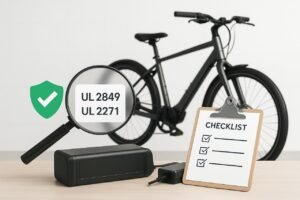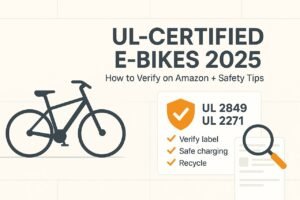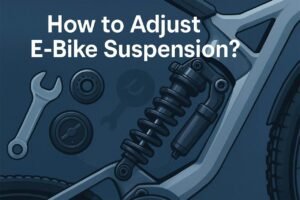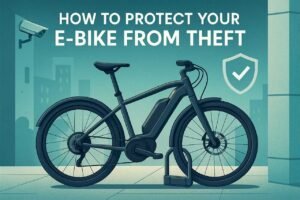
How to Store Your E-Bike Battery for Winter (Step-by-Step)
Learn how to store your e-bike battery for winter: ideal charge, safe storage, monthly checks, and a spring wake-up that protects range and extends life.

Learn how to store your e-bike battery for winter: ideal charge, safe storage, monthly checks, and a spring wake-up that protects range and extends life.

Confirm a UL-certified e-bike and battery—what labels to find, how to use UL Product iQ, NYC rules, red-flag checks, and step-by-step proof you can trust.
![[year] E-Bike Rebates & Incentives: US, Canada, UK & EU (Updated Guide) 2025 E-Bike Rebates Explained: Where to Apply and How to Max Your Savings](https://goebikelife.com/wp-content/uploads/2025/09/E-Bike-Rebates-Explained-300x200.jpg)
Cut the cost of a new e-bike with our 2025 rebates guide. See US, Canada, UK & EU programs, eligibility rules, deadlines, and smart ways to stack savings.

What UL 2849/2271 mean, how to verify claims on Amazon, and safer e-bike picks—plus charging, recall and recycling tips to ride smarter in 2025 worldwide.

Wondering if you need a license for an electric bike? Learn US e-bike classes, state and local rules, key exceptions, and when dirt bikes require licensing.

From materials to geometry and mounts, this guide demystifies ebike frames so you pick the right fit, integrate motor/battery smartly, and ride safer, longer.

Your ebike battery maintenance checklist: balancing, safe charging, ideal temps, and storage. Prevent range fade and ride worry-free.

Curious how fast a 750W electric bike goes? Learn the real mph you can expect, what impacts speed, and tips for maximizing your ride.

Want reliable e-bike hydraulic brakes? Master essential maintenance steps and enjoy worry-free electric bike adventures.

Learn how to adjust e-bike suspension for a smoother, safer ride. Step-by-step tips to fine-tune comfort, control, and performance.

Worried about e-bike theft? Learn how to protect your e-bike from theft with smart locks, parking, and high-tech solutions.

Replace your e-bike brake pads with confidence. Follow our simple instructions and expert tips for smooth, safe rides.